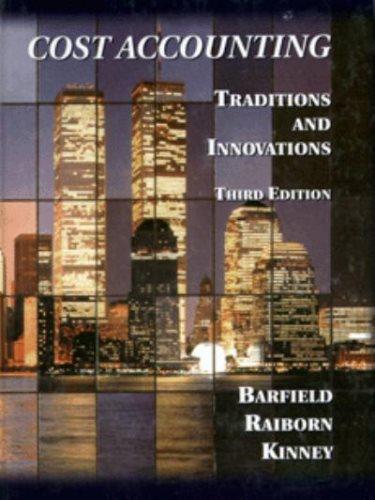National standards for U.S. schools covering 13 subjects have been devised by educators in the arts, mathematics,
Question:
National standards for U.S. schools covering 13 subjects have been devised by educators in the arts, mathematics, history, English and the sciences. . . . Academic professional groups, meanwhile, have been so wary of offending minorities, and so protective of teachers' academic freedoms, that they have often come up with guidelines that are awash in generalities and impossible to codify into a curriculum.
An analysis last year by the American Federation of Teachers found that only 13 states had developed standards clear enough to be translated into actual classroom curriculum. The others have standards that uare too vague for teachers to use them, for parents to understand them," says AFTpresident Albert Shanker.
The report also found that only seven states plan to require students to meet the standards to graduate. “In ?nost states, students won 't in any way be affected by whether or not they can meet the standards," the report said.
The AFT found that most states developed their standards without reviewing what high- achieving countries such as Japan, Germany and France require of students. According to the AFT, at least a quarter ofall secondary-school students in Germany, France, England and Japan pass at least one advanced exam in mathematics, science or other subjects. In the U.S., only 5% of students pass one of the advanced-placement exams that can give them college credit; but the exams aren't required, and there is no penalty for failure.
[SOURCE: Gary Putka and Steve Stecklow, “ ‘A’ for Effort: Educators Try to Set Standards— Again,” Wall Street Journal (March 26, 1996), p. Bl. Reprinted by permission of The Wall Street Journal, © 1996 Dow Jones & Company, Inc. All Rights Reserved Worldwide.]
a. Research the education standards in your home state or country and prepare a report on them. Do you think these standards are measurable? Why or why not?
b. Why do standards, regardless of the purpose for which they are set, need to be tied to consequences?
c. Assume you have been elected state governor on an education reform plat¬ form. The state has in place some objective and measurable education stan¬ dards. How would you tie these standards to consequences? What costs to the state’s taxpayers would be associated with such consequences?
d. Consider the following: Scott Paper spent $400,000 screening 14,176 job applicants to hire 174. Of the 10,000 people who passed the initial screening, 4,000 failed a standardized English and high school algebra test. [SOURCE: Raju Narisetti, “Manufacturers Decry a Shortage of Workers While Reject¬ ing Many,” Wall Street Journal (September 8, 1995), p. A4.] Scott was looking for employees to perform numerous tasks previously handled by managers, and the jobs had a starting salary of $29,000. Do you think that educational standards would help a company like Scott Paper find qualified employees? Explain.
Internet Activities LO1
Step by Step Answer:

Cost Accounting Traditions And Innovations
ISBN: 9780538880473
3rd Edition
Authors: Jesse T. Barfield, Cecily A. Raiborn, Michael R. Kinney





